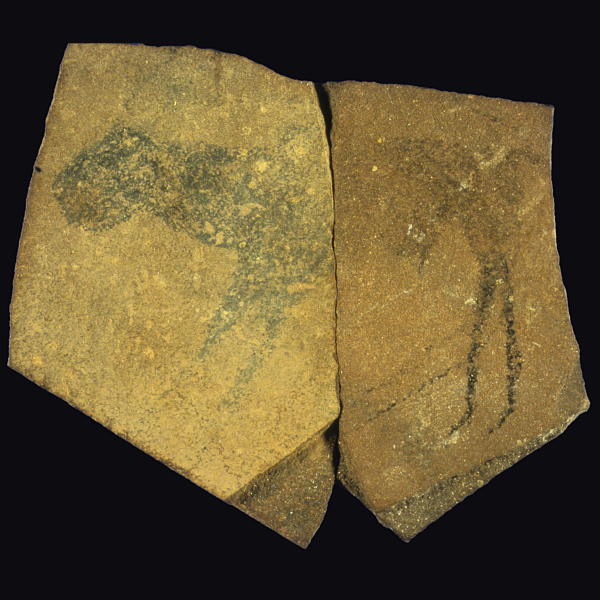Around 27,000 years ago, an inhabitant of a cave in the Hunsberg Mountains in south-western Namibia drew animals on some hand-sized stone slabs. Together with stone tools, animal bones and ashes from fire pits, the paintings were later covered by sediment and the remains of subsequent settlements. But what does this find have to do with space travel? On July 24, 1969, archaeologist W.E. Wendt received the news of the successful return of the Apollo 11 space shuttle during excavations in a previously unnamed cave. He spontaneously gave the site the name “Apollo 11”, not realizing that he was about to make a sensational discovery. The excavation yielded a sequence of settlement layers spanning more than 100,000 years. No other site in the country reflects Namibia’s prehistoric past more completely. However, the discovery of painted plates, whose age was determined to be between 26,000 and 28,000 years old using the radiocarbon method, is outstanding. This makes these drawings not only the oldest works of art in Africa, but also some of the earliest evidence of artistic creation in the world. The drawings were found in the latest “Middle Stone Age” layer of the Apollo 11 cave. The “Middle Stone Age” began in Africa almost 200,000 years ago, at the same time as the earliest appearance of modern Homo sapiens there, while the northern hemisphere was still in an ice age for several millennia. It is an era of numerous innovations such as fishing, the use of color pigments and the manufacture of bone tools. Due to the first appearance of art and jewelry – as an expression of symbolic action – the beginning of “modern” behavior during the “Middle Stone Age” is also discussed. It is therefore one of the most important periods in human history. Nevertheless, we know comparatively little about this period. Only a few sites have been excavated to today’s standards, and for a long time there was a lack of suitable dating methods for the older phases of the Middle Stone Age. In the meantime, new dating methods (electron spin resonance and optically stimulated luminescence) have been established which close this gap. For this reason, archaeologist Dr. Ralf Vogelsang from the Africa Research Unit of the Institute of Prehistory and Early History at the University of Cologne would like to revisit the site. The main aim is to take dating samples. In combination with refined excavation methods and modern approaches to evaluating the finds, the first reliable chronological classification of the cultural layers promises new insights into a time in which we all have our roots.
Namibia: Apollo 11: The culture of early modern man in Africa – opportunities for a new chronology
2007


